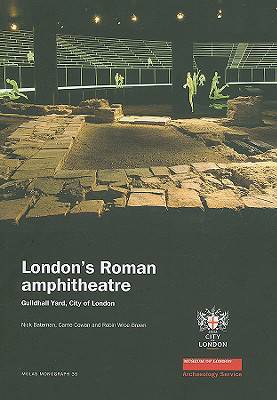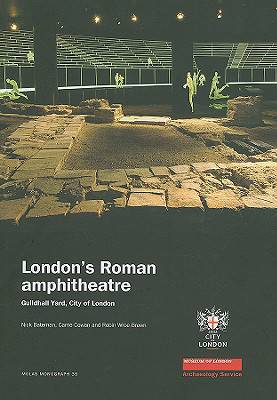
- Afhalen na 1 uur in een winkel met voorraad
- Gratis thuislevering in België vanaf € 30
- Ruim aanbod met 7 miljoen producten
- Afhalen na 1 uur in een winkel met voorraad
- Gratis thuislevering in België vanaf € 30
- Ruim aanbod met 7 miljoen producten
Zoeken
London's Roman Amphitheatre
Excavations at the Guildhall
Nick Bateman, Carrie Cowan, Robin Wroe-Brown
€ 50,45
+ 100 punten
Omschrijving
The discovery of one of Roman Londons most significant buildings - its amphitheatre - underneath the medieval Guildhall resulted from major archaeological excavations which took place between 1985 and 1999 as part of the City of London Corporations ambitious programme of redevelopment at the Guildhall. The history of the Guildhall and its precinct from the 12th to the 20th centuries is the subject of a companion volume. This book describes the construction, development and disuse of the amphitheatre, from the 1st to 4th centuries AD. Constructed on relatively low ground in the north-west part of Londinium, the first amphitheatre was built in c AD 74 of timber. Evidence was recovered for the eastern entrance, arena palisade, bank for seating and associated drains. The amphitheatre was rebuilt shortly after AD 120, with masonry foundations and walls, associated with new timber stands. The evidence allows conjectural reconstruction and comparison with other British amphitheatres. Abandoned by the mid 4th century, the amphitheatre was largely demolished and sealed by dark earth. The arena may have survived as an oval depression until the area was reoccupied in the 11th century. Significant finds assemblages include an early 2nd-century dump of glass cullet, lead curses from the arena surface and samian pottery with gladiatorial motifs. The amphitheatres remains are preserved and displayed in the basement of the new Guildhall Art Gallery.
Specificaties
Betrokkenen
- Auteur(s):
- Uitgeverij:
Inhoud
- Aantal bladzijden:
- 240
- Taal:
- Engels
- Reeks:
Eigenschappen
- Productcode (EAN):
- 9781901992717
- Verschijningsdatum:
- 14/12/2008
- Uitvoering:
- Boek
- Afmetingen:
- 216 mm x 297 mm
- Gewicht:
- 1270 g

Alleen bij Standaard Boekhandel
+ 100 punten op je klantenkaart van Standaard Boekhandel
Beoordelingen
We publiceren alleen reviews die voldoen aan de voorwaarden voor reviews. Bekijk onze voorwaarden voor reviews.











